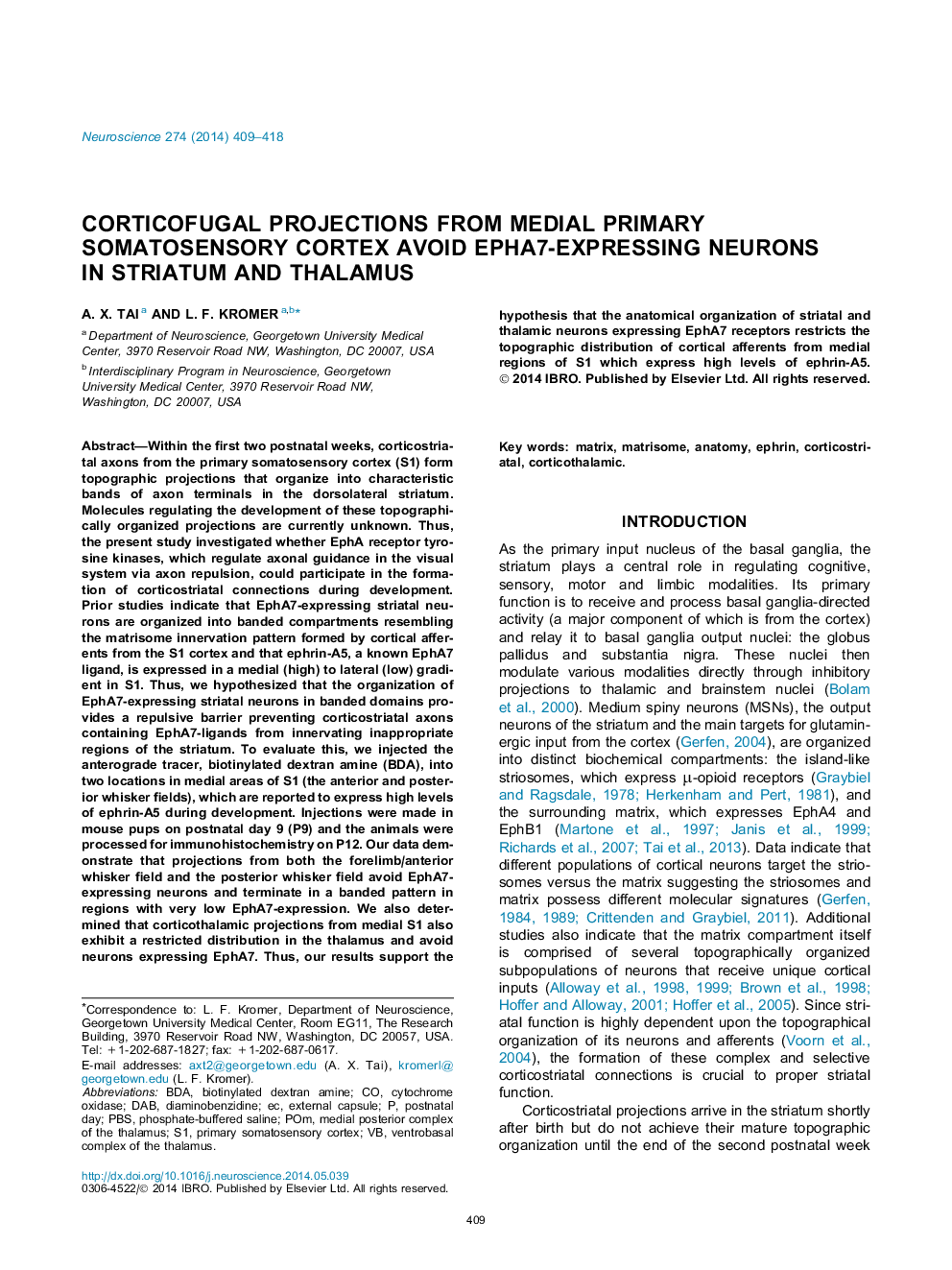| Article ID | Journal | Published Year | Pages | File Type |
|---|---|---|---|---|
| 4337647 | Neuroscience | 2014 | 10 Pages |
•Corticostriatal projections from the medial somatosensory cortex avoid EphA7-expressing neurons in the striatum.•Corticothalamic projections from the somatosensory cortex also avoid EphA7-expressing neurons in the thalamus.•EphA7–ephrinA interactions mediate corticofugal terminal topography from the medial S1 cortex.
Within the first two postnatal weeks, corticostriatal axons from the primary somatosensory cortex (S1) form topographic projections that organize into characteristic bands of axon terminals in the dorsolateral striatum. Molecules regulating the development of these topographically organized projections are currently unknown. Thus, the present study investigated whether EphA receptor tyrosine kinases, which regulate axonal guidance in the visual system via axon repulsion, could participate in the formation of corticostriatal connections during development. Prior studies indicate that EphA7-expressing striatal neurons are organized into banded compartments resembling the matrisome innervation pattern formed by cortical afferents from the S1 cortex and that ephrin-A5, a known EphA7 ligand, is expressed in a medial (high) to lateral (low) gradient in S1. Thus, we hypothesized that the organization of EphA7-expressing striatal neurons in banded domains provides a repulsive barrier preventing corticostriatal axons containing EphA7-ligands from innervating inappropriate regions of the striatum. To evaluate this, we injected the anterograde tracer, biotinylated dextran amine (BDA), into two locations in medial areas of S1 (the anterior and posterior whisker fields), which are reported to express high levels of ephrin-A5 during development. Injections were made in mouse pups on postnatal day 9 (P9) and the animals were processed for immunohistochemistry on P12. Our data demonstrate that projections from both the forelimb/anterior whisker field and the posterior whisker field avoid EphA7-expressing neurons and terminate in a banded pattern in regions with very low EphA7-expression. We also determined that corticothalamic projections from medial S1 also exhibit a restricted distribution in the thalamus and avoid neurons expressing EphA7. Thus, our results support the hypothesis that the anatomical organization of striatal and thalamic neurons expressing EphA7 receptors restricts the topographic distribution of cortical afferents from medial regions of S1 which express high levels of ephrin-A5.
